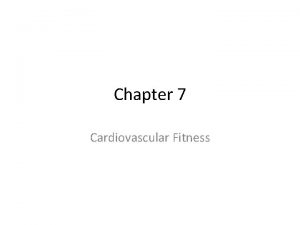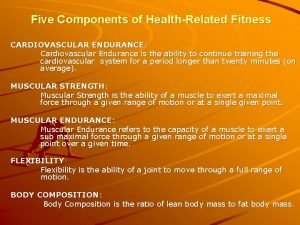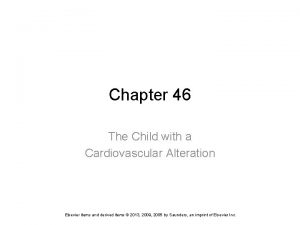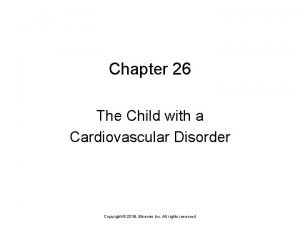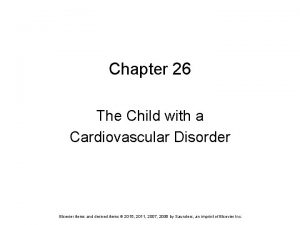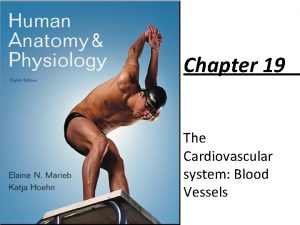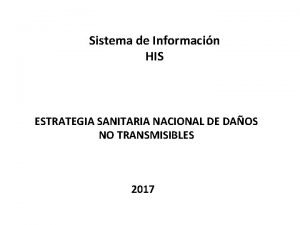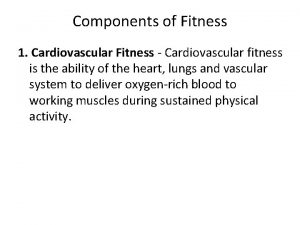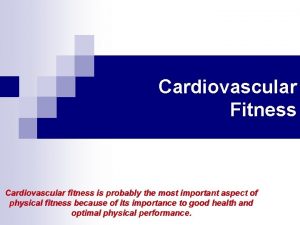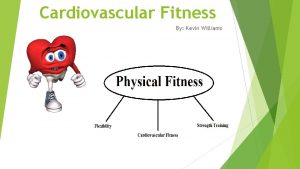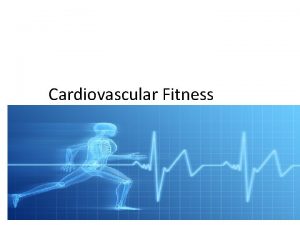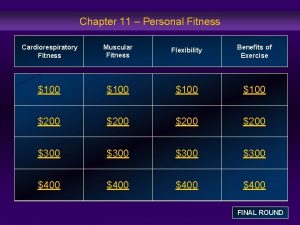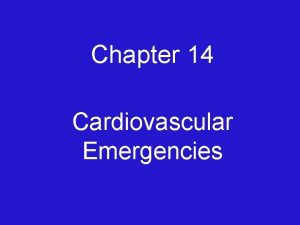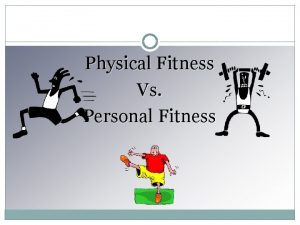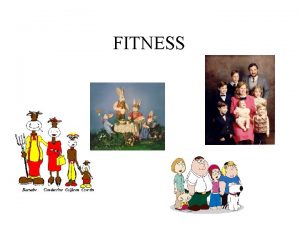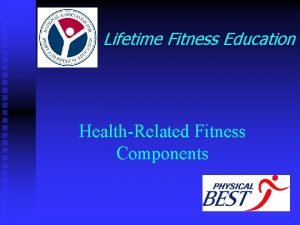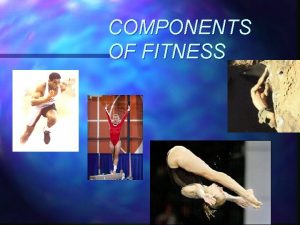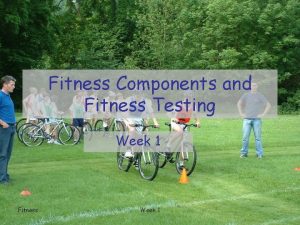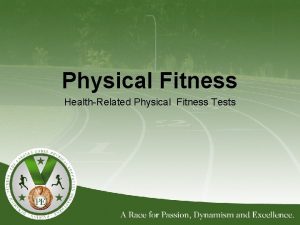Chapter 7 Cardiovascular Fitness What Is Cardiovascular fitness



















- Slides: 19

Chapter 7 Cardiovascular Fitness

What Is Cardiovascular fitness? • The bodies ability to provide OXYGEN continuously to MUSCLES as work is performed over an EXTENDED PERIOD OF TIME.

Parts of Cardiovascular Fitness • Two Body Systems – Circulatory – Respiratory • Air is taken in the blood picks up the oxygen from the lungs and takes it to the heart pumps the blood all over the body.

Heart • Four Chambers • 2 pumps CLICK ME • Right pump blood to lungs • Left pump blood all over body

Arteries, Veins, & Capillaries • Arteries – Carry blood away from the heart to the muscles • Capillaries – Bridge between arteries and vein – Drop off oxygen – Pick up waste • Veins – Carry blood back to the heart – Use muscles and valves to assist in blood flow

Monitoring Heart Rate • Pulse – Caused by pressure of blood against artery wall – Corresponds with heart beat – Should be taken at the wrist (radial) or neck (carotid) using your index and middle finger

Blood Pressure • Measure of blood force against artery wall • Recorded with two numbers – Systolic pressure when heart is contracted – Diastolic pressure when heart is relaxed • Normal Range 120/80 • Healthy Range 100/70

Heart Rates • • Resting Heart Rate Maximum Heart Rate Target Heart Rate Recovery Heart Rate

Resting Heart Rate • Pulse rate at rest (no activity) • Should be taken when you first wake up in a sitting or lying down position • Normal 50 -100 bpm • Healthy below 70 bpm

Maximum Heart Rate • Found by subtracting your age from 220 – Max. HR = 220 -age – Max. HR = 220 -15 – Max. HR = 205 • Should never be exceeded when exercising • Decreases with age

Target Heart Rate • Desired INTENSITY level when training • Found by taking 60% of Max. HR (lower limit) and 90% of Max. HR (upper limit) • Lower limit = (220 -age) x 60% • Upper limit = (220 -age) x 90%

Recovery Heart Rate • Used to determine when to progress your workout • Pulse should drop to 120 bpm Five minutes after working out • Pulse should drop to 100 bpm Ten minutes after working out

Cardiovascular Disease • Atherosclerosis • Thrombosis • Heart Attack blockage of an artery feeding the heart • Stroke blockage of an artery feeding the brain

Benefits of Cardiovascular Exercise • Decrease in atherosclerosis and heart disease • Increase in # of arteries on heart muscle • Increase in energy

Benefits Continued • Improved appearance – Controls weight • Stronger Heart – Pumps more blood more efficiently • Mental Benefits – Increase in concentration – Helps cope with stress – Better self-concept

Principle of Overload Minimum Requirements • Frequency 3 x per week (daily is best) • Intensity 60% of Max. HR • Time 20 minutes per session

Principle of Progression • Gradually increase overload over time – Frequency • # of times per week • Ex. 3 x 4 x per week – Intensity • Target Heart Rate • Ex. 60% 70% of Max. HR – Time • Distance Traveled 1 mile – 2 miles • Time of Activity 20 minutes – 30 minutes

Principle of Specificity • Aerobic Exercise means the activity needs oxygen so it can be performed for a long duration. • Anaerobic Exercise means the activity doesn’t need oxygen because the body uses the oxygen faster then it can replace it. • Aerobic exercise is needed to increase cardiovascular fitness

Aerobic Exercises • • • Swimming Biking Running Speed Walking Aerobics Hiking • • • Elliptical Machines Rowing Machines Jumping Rope Aerobic Dancing Stairmaster Roller Blading
 Fitness chapter 7
Fitness chapter 7 5 components of health related fitness
5 components of health related fitness Health-related
Health-related Chapter 19 the circulatory or cardiovascular system
Chapter 19 the circulatory or cardiovascular system Cengage chapter 5
Cengage chapter 5 Chapter 46 the child with a cardiovascular alteration
Chapter 46 the child with a cardiovascular alteration The child with a cardiovascular disorder chapter 26
The child with a cardiovascular disorder chapter 26 Chapter 25 assessment of cardiovascular function
Chapter 25 assessment of cardiovascular function Chapter 11 the cardiovascular system figure 11-3
Chapter 11 the cardiovascular system figure 11-3 Figure 11-2 is an anterior view of the heart
Figure 11-2 is an anterior view of the heart Chapter 11 the cardiovascular system
Chapter 11 the cardiovascular system Chapter 11 the cardiovascular system
Chapter 11 the cardiovascular system Cardiovascular system diseases and disorders chapter 8
Cardiovascular system diseases and disorders chapter 8 Chapter 17 cardiovascular emergencies
Chapter 17 cardiovascular emergencies Chapter 13 cardiovascular system
Chapter 13 cardiovascular system Chapter 11 the cardiovascular system figure 11-2
Chapter 11 the cardiovascular system figure 11-2 Blood vessels
Blood vessels The child with a cardiovascular disorder chapter 26
The child with a cardiovascular disorder chapter 26 Venule
Venule Riesgo cardiovascular por perimetro abdominal
Riesgo cardiovascular por perimetro abdominal
